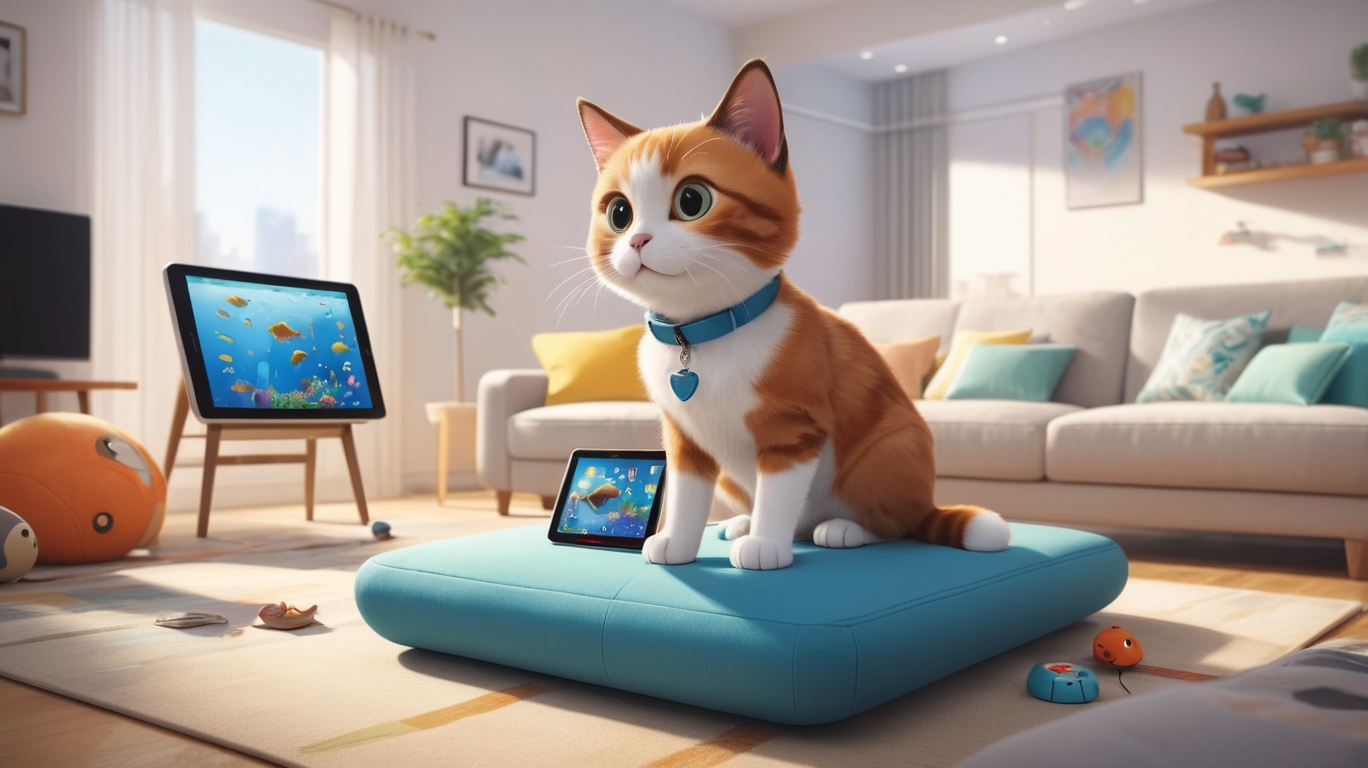
As digital entertainment has become increasingly prevalent in today’s society, it should come as no surprise that our furry friends enjoy interactive activities. While video games have long captivated humans, a growing niche has emerged: games designed specifically for pets. With their unique blend of digital communication, engagement, and enrichment, the pet games market is booming. Examples include motion-sensing games for dogs and sensory apps for cats.
Why create games for pets?
Playfulness is natural for both cats and dogs. Nowadays, there is a wide variety of toys for pets – feather sticks, balls, and chew toys. However, as pet owners become increasingly tech-savvy and spend more time on their devices, they are seeking new ways to engage their pets in digital activities. Pet games can:
- Provide mental stimulation: For pets in particular, who might not receive as much environmental stimulation.
- Alleviate boredom and reduce anxiety: Interactive elements can help entertain pets while their owners are away.
- Promote physical exercise: Some games promote physical activity, which helps people lead healthier lives.
- Strengthen the human-pet bond: Both the pet and the owner may enjoy playing together.
Types of Pet Games on the Market
1. Cat Games with Touch Screens
Tablets are especially popular with cat-themed developers. These apps typically feature digital creatures, such as fish, insects, or mice, that dart around the screen. Cats instinctively nod to movement, making them a simple but effective game mechanic.
Examples:
- A Lonely Cat – A series of mini-games with insects, lasers, and more.
- A Cat Game – Contains a laser pointer simulation and a rodent-hunting mini-game.
2. Dog Games with Motion Sensors
Since dogs don’t care for touchscreens, the majority of dog games rely on motion or sound. They use motion-activated cameras, treat-dispensing robots, or smart house appliances to identify the dog’s presence and reward their behaviour.
Examples:
- The CleverPet Hub is a dog game console that uses lights and sounds to reward correct button presses with treats.
- The Wickedbone is an interactive bone that can be controlled via an app and reacts to your dog’s behaviours.
3. Augmented Reality and Smart Toys
Traditional play takes on a new dimension thanks to smart toys and augmented reality. These toys are usually app-controlled and have sensors integrated to respond to your pet’s movements.
Examples:
- Petcube Play is a smartphone-controlled smart camera with an integrated laser play.
- Felix & Fido Smart Ball – an app-connected rolling ball that encourages play and movement.
Pet Game Development: Features and Challenges
For developers, creating games for pets is a unique task. The species traits of the animals, as well as their gaming interests and behaviours, must be taken into account.
- Cats are known for their love of hunting and chasing, while dogs tend to respond to voice commands.
- Dogs rely more on their hearing and smell, but cats have better vision and reflexes.
- Physical gadgets must be resistant to drooling, biting, and rough play.
- To safeguard pets’ health, low screen brightness and non-toxic materials are essential.
- Pets cannot learn complex instructions. Interactions need to come naturally.
The Role of AI and Data Tracking
AI is included in modern pet games to analyse behaviour. Pets’ activity levels, preferred games, and reactions to stimuli can all be monitored by them.
For example, a smart feeder can learn a dog’s play habits and only dispense food when certain activity goals are met, combining gameplay with health tracking.
Market Trends and Opportunities
The pet tech market is booming, estimated to reach $20 billion by 2028, with games forming an exciting subcategory. For game studios, this opens up new opportunities:
- Cross-platform extensibility: Many pet games can be used as both mobile apps and hardware-integrated experiences.
- Subscription models: Continuous access to content, such as new games or treat refill services.
- Social features: Multiplayer pet games or shared experiences between pet owners.
At Melior Games, we see a potential future where pet games are transformed into intelligent entertainment ecosystems. Games that understand the needs of the animal, promote well-being, and offer shared moments of joy between pets and their owners.
Final thoughts
Pet games are a combination of animal behavior science, game design, and smart technology. Now the cat is catching a digital fish, the dog is solving a puzzle for treats, which diversifies the playtime of pets when their owners are a little busy in this fast-paced world of achievements and technology.
So the next time you start a game, ask yourself: Why not let your pet join in the fun too?




